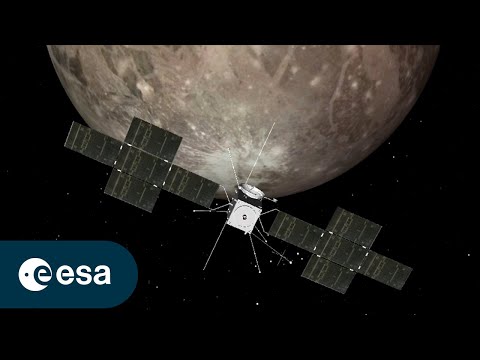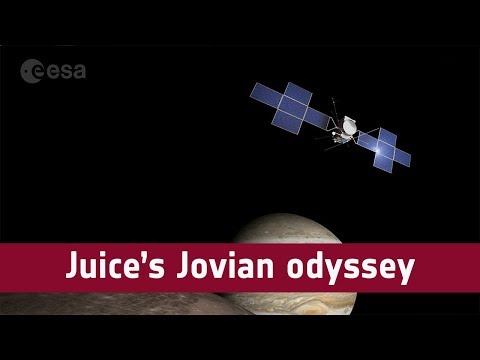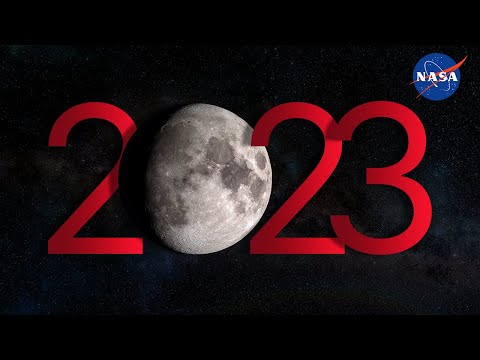Life Beyond Earth: Venice Biennale lunar habitat
A detailed concept for a lunar habitat, created by one of the world’s leading architectural firms with ESA technical support, is currently on show at the Biennale in Venice. Skidmore, Owings & Merrill, originator of many of the world’s tallest skyscrapers, worked with ESA on a semi-inflatable habitat design which could be part of a long-term vision for an international Moon settlement.
The resulting design is on show at the 17th International Architecture Exhibition of La Biennale di Venezia (@BiennaleChannel). While the theme of the overall exhibition is ‘How will we live together?’, the SOM installation is called ‘Life Beyond Earth’, peering beyond our post-COVID-19 planet to show how human life can be sustained in the hostile space environment.
The installation encompasses two large-scale, physical models and this film, bringing Biennale visitors on a journey from Earth to the Moon’s surface.
SOM designed a semi-inflatable shell structure to offer the highest possible volume to mass ratio. Once inflated on the lunar surface, it would reach approximately double its original internal volume.
A lot of work went into the four-storey habitat interior, in terms of lighting conditions, reconfigurable features, and a high floor to ceiling space, to allow crew members to take advantage of lunar one-sixth g using grabbing bars and other simple aids.
Its chosen site has been described as the most desirable real estate in the Solar System: the rim of Shackleton crater beside the lunar South Pole. Avoiding the crippling temperature extremes of the Moon’s two-week days and nights, this location offers near-continuous sunlight for solar power, an ongoing view of Earth and access to lunar water ice deposits in adjacent permanently-shadowed craters.
Credit: SOM
★ Subscribe: http://bit.ly/ESAsubscribe and click twice on the bell button to receive our notifications.
Check out our full video catalog: http://bit.ly/SpaceInVideos
Follow us on Twitter: http://bit.ly/ESAonTwitter
On Facebook: http://bit.ly/ESAonFacebook
On Instagram: http://bit.ly/ESAonInstagram
On Flickr: http://bit.ly/ESAonFlickr
We are Europe’s gateway to space. Our mission is to shape the development of Europe’s space capability and ensure that investment in space continues to deliver benefits to the citizens of Europe and the world. Check out https://www.esa.int/ to get up to speed on everything space related.
Copyright information about our videos is available here: https://www.esa.int/ESA_Multimedia/Terms_and_Conditions
#ESA
#MoonVillage
#BiennaleArchitettura2021





Superbe vidéo, concept très intéressant ! Congratulations ESA
This reminds me a lot of Erik Wernquist's "Wanderers" short film. Definitely recommended if you liked this one.
The Moon Village (ESA) in this video, I think, is on the rim of Shackleton Crater near the Moon's south pole. At 3:33 we see Earth near the horizon. This is prime real estate for two reasons;
one, the crater rims around the Moon's south pole have multiple locations that have near continuous sunshine https://en.wikipedia.org/wiki/Peak_of_eternal_light and so nearly continuous power. At 1:58 we get a clear view of a "forest" of solar power "trees" catching the sunshine coming in nearly parallel to the ground. Power transmission lines will be run to the other peaks for a network providing continuous power.
and two, the bottoms of those craters are cryogenic – they have never had any sunshine since the Moon became tidally locked to the Earth, possibly even before that. They only see the background radiation of the Universe, i.e., ~2.73 Kelvin, very close to absolute zero. Some of the volatiles put in to a temporary atmosphere of the Moon by every asteroid and comet impact condensed there and have stayed trapped by the extreme cold. The volatiles not trapped there were either accelerated to escape velocity by the high temperature dayside or were swept away by the solar wind with a very small fraction embedded in the regolith not at the poles.
This Moon Village will be the first step in expanding into the solar system. The water ice trapped in those lunar cryogenic polar craters can be mined and processed into fuel (LH2) and oxidizer (LOX) and SOLD to space ships and space probes at LEO. Other volatiles like CO2 and NH3 (amonia) will be used to support farming and food production.
If you have as much Delta V available as it took you to get to LEO you can go anywhere in the solar system.
Strangely reminds me of those safety cone houses in Cars.
Love it
Do they have the budget to do that? When is esa supposed to land on the moon?
This great You can ESA
Wow! I would love to see that happen in my lifetime!
Awesome
I am ready ! Greetings ELECTRO PROPULSION LAB !
Thanks for over representation as usual a minority black woman probably lesbian, just to show your woke, EUROPEAN space agency, just try representing the 90% for once , you know ? the people who are ethnicity European
是时候重新设计或替换 IIS 了,它什么时候退役,它会写下我们的太空故事……
I can’t imagine what our ancestors would think of what we are about to do as a species. Oh Esa you are such perfect art.